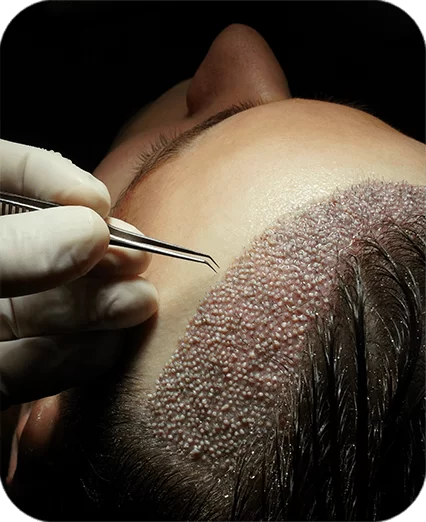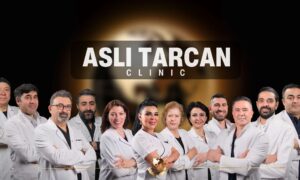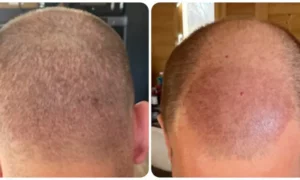In recent years, hair transplantation has become an increasingly popular procedure for individuals experiencing hair loss. Thanks to medical advancements, more people are turning to hair transplant solutions to regain confidence and achieve a more youthful appearance. When evaluating results, many patients—and even clinics—often emphasize graft count as a key indicator of success. But is hair transplant success only determined by graft count? The answer is more complex than a simple number.
This article explores the multiple factors that influence the outcome of a hair transplant and explains why focusing solely on graft numbers can be misleading.
Understanding Graft Count
A graft is a small piece of tissue that contains hair follicles. In modern procedures like FUE (Follicular Unit Extraction) and DHI (Direct Hair Implantation), grafts are extracted from the donor area—typically the back or sides of the scalp—and transplanted to areas affected by hair loss. Clinics typically report the number of grafts used, and patients often assume that higher numbers indicate better results.
While graft count is a useful and quantifiable metric, it is only one aspect of a much broader picture. The number of grafts transplanted does not always correlate with quality, coverage, or long-term satisfaction.
Why Graft Count Alone Can Be Misleading
- Quality Over Quantity: Two patients may receive the same number of grafts, but one may experience fuller, more natural-looking coverage due to better planning and precision. The strategic placement of grafts often matters more than the number itself.
- Hair Characteristics: Factors such as hair thickness, texture, and curliness have a major impact on visual density. For example, someone with thick, curly hair may require fewer grafts to achieve the same fullness that someone with fine, straight hair would need significantly more grafts for.
- Donor Area Limitations: The donor area is finite. Extracting too many grafts can lead to overharvesting, resulting in visible thinning or patchiness at the back of the head. Maintaining a balanced donor zone is just as important as achieving coverage in the recipient area.
These points highlight why asking “Is hair transplant success only determined by graft count?” is essential when evaluating your options. A thoughtful and artistic approach often yields better, more natural results than a purely numerical one.
Surgical Planning and Design
An effective hair transplant requires more than just extracting and placing grafts. Aesthetic design plays a critical role. The hairline must be carefully crafted to suit the individual’s facial structure, age, and future hair loss patterns. The angle, direction, and density of implantation also need to be adjusted for a natural look.
Experienced clinics, such as Hair of Istanbul, prioritize individualized planning during consultation and surgery preparation. Surgeons use tools like scalp mapping and facial symmetry analysis to ensure the results are harmonious with the patient’s overall appearance.
Surgeon Expertise Matters
One of the most underrated elements of success is the skill and experience of the medical team. Even with fewer grafts, an experienced surgeon can deliver exceptional results. The artistry in hair transplantation—particularly in designing a natural-looking hairline and managing limited graft resources—relies heavily on the surgeon’s technical finesse.
The reverse is also true: even with a high graft count, poor execution can lead to uneven distribution, unnatural angles, or visible scarring. Choosing a clinic with a proven track record and experienced surgical staff is vital.
Post-Operative Care and Healing
Success is also tied to what happens after the surgery. Proper post-operative care—including avoiding friction, using recommended products, following washing guidelines, and protecting the scalp from sun exposure—plays a crucial role in ensuring the transplanted grafts survive and grow.
Clinics that provide detailed recovery plans, follow-up support, and access to medical staff in the days and weeks following the procedure help patients avoid complications and achieve optimal outcomes.
Before and After Comparison
Instead of focusing only on numbers, patients should evaluate before and after hair transplant results, preferably from individuals with similar hair types, loss patterns, and aesthetic goals. These images offer invaluable insights into what can be realistically achieved and give a better sense of the clinic’s capabilities.
Online galleries and patient testimonials can also help set expectations and assist in choosing a clinic that aligns with one’s needs.
Patient-Specific Factors
Several personal factors influence transplant success, including:
- Age and the stability of hair loss
- Scalp elasticity and skin condition
- General health and medical history
- Lifestyle choices (e.g., smoking, diet)
A responsible clinic performs detailed assessments during the consultation phase to ensure that the patient is a suitable candidate and that expectations are realistic. Clinics like Hair of Istanbul use diagnostic tools and personalized evaluations to guide treatment planning.
Long-Term Maintenance
Hair transplants are often seen as permanent solutions, but they may require ongoing care. In cases where hair loss is progressive, additional sessions or supportive treatments like PRP (Platelet-Rich Plasma) therapy, minoxidil, or finasteride may be recommended to preserve and enhance results.
Being prepared for the possibility of maintenance treatments ensures long-term satisfaction and helps protect the investment made in the procedure.
A Holistic Approach to Success
So, is hair transplant success only determined by graft count? The clear answer is no. Graft count is only one piece of a much larger puzzle. True success depends on a combination of:
- Personalized surgical planning
- Surgeon skill and experience
- Natural hairline design
- Proper healing and aftercare
- Long-term hair management
Understanding these elements allows patients to make more informed decisions, reduce the likelihood of disappointment, and pursue treatments that are safe, natural, and tailored to their needs.
Clinics with experience in customizing treatment plans—like Hair of Istanbul—encourage patients to look beyond numbers and focus on overall results. Ultimately, success is defined not just by quantity, but by quality, natural appearance, and patient satisfaction.



































